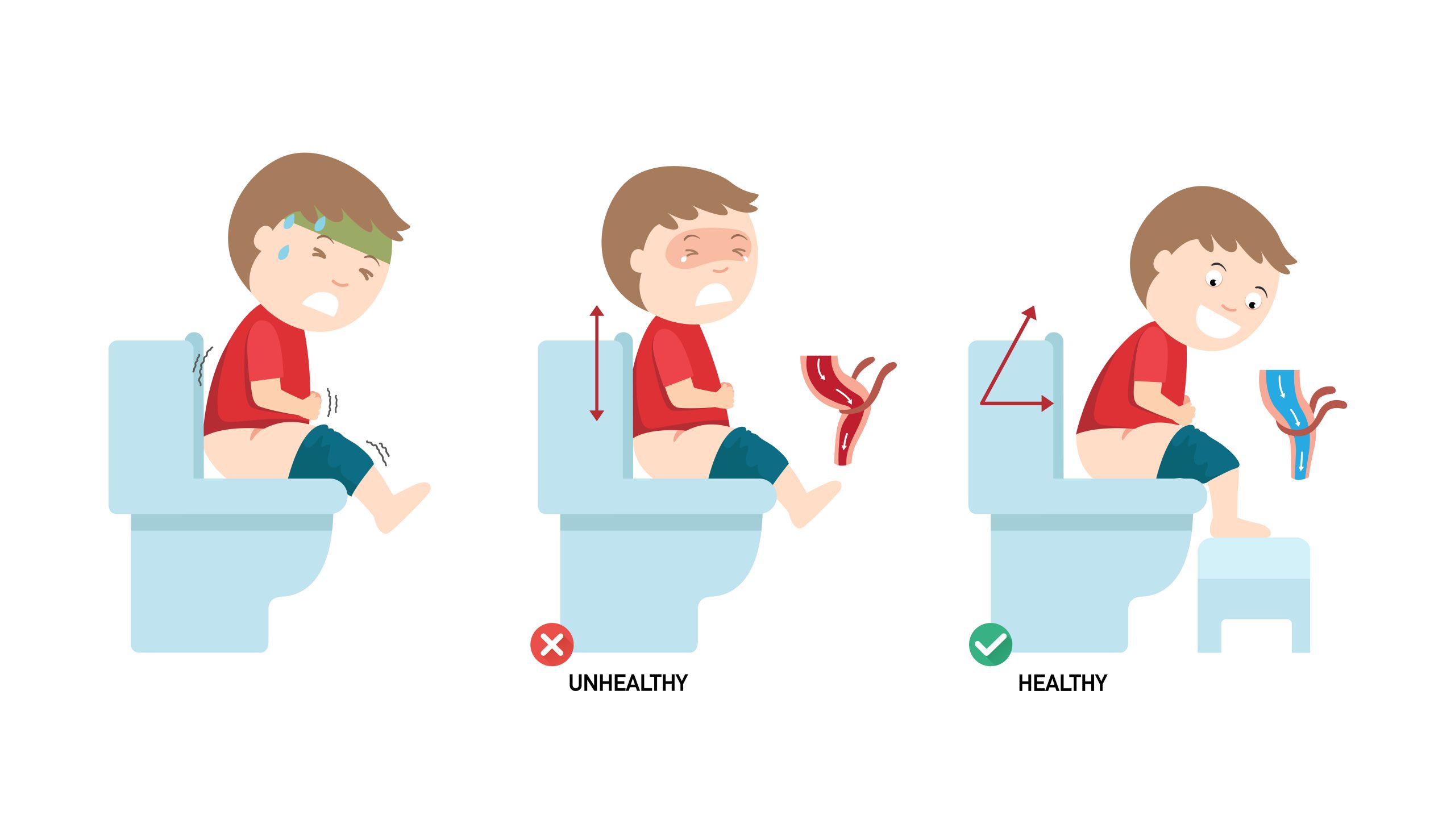According to this study, Toilet training can take anywhere from a few days to a few months, depending on your child’s readiness and personality. Don’t worry if your child has setbacks or regressions, as this is normal and can be caused by stress, illness, or changes in routine.
Toilet training can be a challenging and stressful process for both parents and children, especially if it is started too early or too late. That’s why we have created the Toilet Training Readiness Assessment Tool, a simple and easy-to-use tool that helps you assess your child’s readiness for toilet training. It consists of a series of questions that cover the physical, cognitive, and emotional aspects of readiness.
Signs of Toilet Training Readiness
Does your child show physical, behavioral, and cognitive signs of being ready for toilet training? Understanding these signs can help you determine if they are ready to start this milestone.
Physical signs
Children show physical signs of readiness for potty training, such as maintaining dryness for extended periods and demonstrating independence in using the toilet and managing clothing. Predictable bowel movements and observable changes in facial expressions or body movements also indicate readiness, helping determine the optimal time to start potty training. Also check our Serious Illness Calculator, a useful resource for assessing the severity of various illnesses and seeking appropriate medical attention.
Behavioral signs
Watch for behavioral signs of toilet training readiness, like showing interest in the bathroom, discomfort in soiled diapers, and mimicking adults during bathroom routines. These cues suggest your child may be ready for potty training and beginning to grasp toilet use. Recognizing these behaviors is key to determining when to start training. When considering “Cognitive signs,” it’s vital to understand how your child’s thinking skills influence their readiness for toilet training.
Cognitive signs
Toddlers ready for toilet training can understand and follow simple instructions, express their needs, recognize the urge to go and imitate others’ bathroom habits, showing independence. Encouraging their curiosity by letting them observe and ask questions supports their cognitive development during this transition.
Best Practices for Successful Toilet Training
Preparing the child is crucial for successful toilet training. It’s important to start when your child shows signs of readiness and be patient through accidents and setbacks. Staying dry overnight, managing outings during training, and supporting your child’s independence are also key best practices for successful toilet training.
Preparing the child
Help your child become familiar with the potty
Getting started
To start potty training, establish a routine and make the child comfortable with a potty chair or seat adapter. Encourage independent use by ensuring they can undress and sit on the potty. Take them regularly, especially after meals and naps, and celebrate successes with praise and rewards. Create a positive environment with picture books or videos, and handle accidents calmly without frustration. Also, try our Spoiled Child Assessment, a practical guide to understanding and addressing behaviors that may lead to a spoiled child.
Dealing with accidents and setbacks
Toilet training often involves accidents and setbacks. Stay patient and supportive throughout.
React calmly to accidents, offering reassurance and understanding. Encourage the child’s involvement in clean-up to promote responsibility and independence. Avoid punishment or shame, as it hinders progress. Emphasize positive reinforcement for successful attempts and reevaluate readiness if setbacks persist.
Staying dry overnight
After dealing with accidents and setbacks, achieving staying dry overnight may take time and practice. Here are some tips:
- Encourage your child to limit drinks in the evening, especially those containing caffeine or sugar.
- Establish a consistent bedtime routine, including going to the toilet before bed.
- Use waterproof mattress protectors to ease any worries about accidents.
- Offer positive reinforcement for waking up dry, such as praise or a small reward.
- Consider waking your child for a nighttime toilet trip until they can independently stay dry.
Out and about during training
Navigating potty training while out and about can be a challenge, but with the right strategies, it can be managed effectively. Here are some tips to help make it easier:
- Plan by identifying nearby restrooms and making sure your child is familiar with them.
- Pack a portable potty or seat reducer for public toilets to make the process more comfortable for your child.
- Dress your child in easily removable clothing to streamline bathroom breaks.
- Encourage your child to use the restroom before leaving the house and offer reminders to go while out.
- Use positive reinforcement and praise when your child successfully uses public restrooms during outings.
- Be patient and understanding if accidents happen, reassuring your child that it’s okay and helping them clean up discreetly.
- Consider using disposable training pants or underwear specifically designed for outings as a backup plan.
In conclusion, recognizing the signs of toilet training readiness is crucial for a successful transition from diapers to using the toilet. Our brief assessment tool at BizCalcs.com can help you evaluate your child’s readiness level. Remember, observing physical, behavioral, and cognitive signs is key. Best practices include establishing routines, staying patient through setbacks, and encouraging a positive environment.
Additional Resources
Related Assessments:

